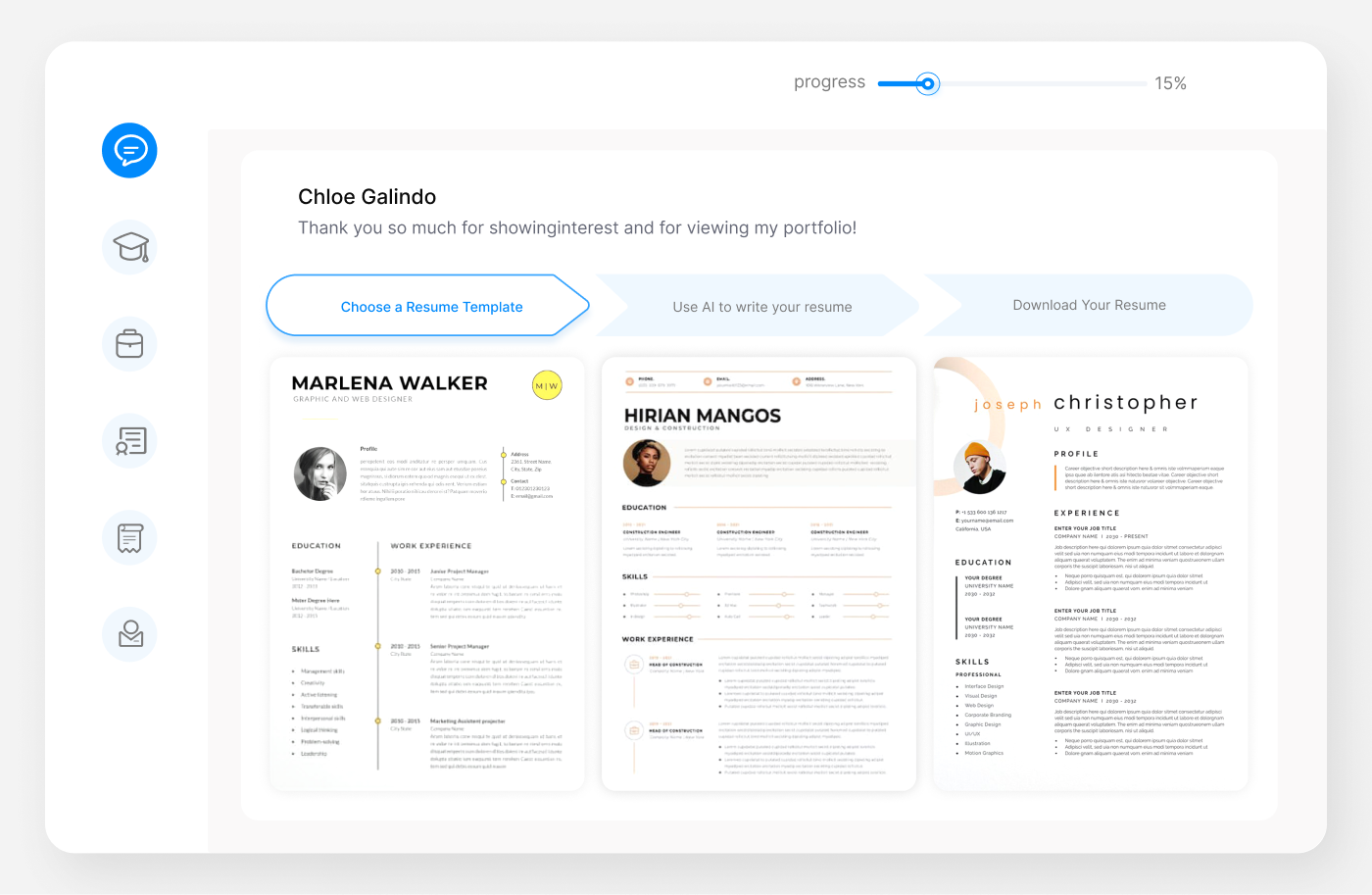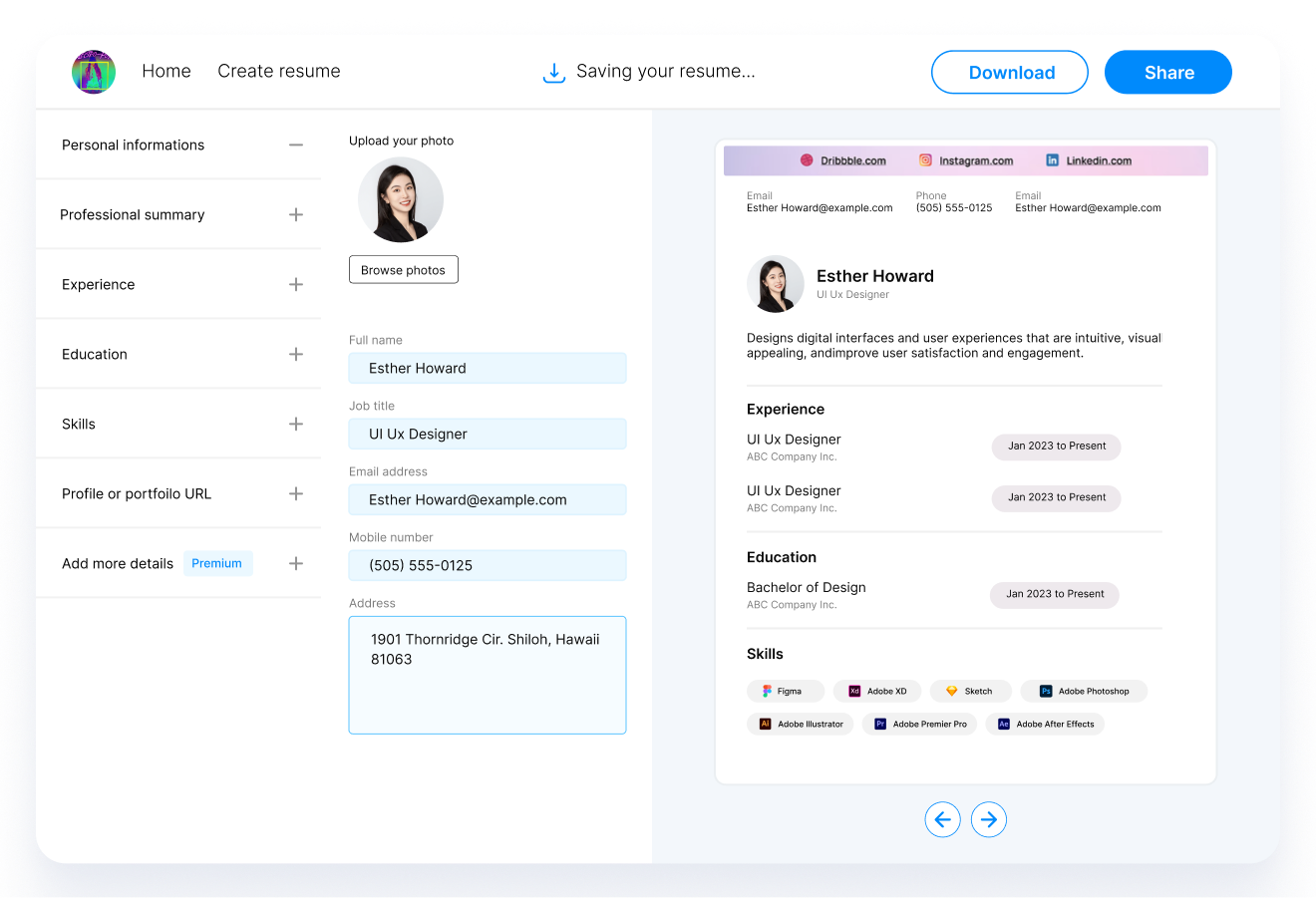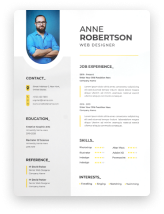In the competitive world of accounting and finance, crafting a standout resume is your first step towards landing your dream job as a Claims Adjuster. This guide is your comprehensive resource for understanding what makes a Claims Adjuster resume not just good, but exceptional. From the intricacies of analyzing and evaluating insurance claims to showcasing your ability to negotiate and resolve claims efficiently, we cover all you need to know to make your resume shine. Whether you're a seasoned professional or stepping into the world of finance and insurance, this guide provides actionable advice, real-life examples, and professional insights to elevate your resume and set you apart from the competition. Get ready to dive into the essentials of a Claims Adjuster resume that opens doors to new opportunities.

Claims Adjuster Resume Example
Alex Rivera
345 Windward Way
Miami, FL 33133
(305) 555-9876
alex.rivera@email.com
LinkedIn: linkedin.com/in/alexrivera-claimsadjuster
Objective
Dedicated and detail-oriented Claims Adjuster with over 5 years of experience in the insurance industry, specializing in property and casualty claims. Proven track record of accurately assessing damage, interpreting policies, and negotiating settlements. Adept at managing multiple cases simultaneously, ensuring timely resolution and client satisfaction. Seeking to leverage expertise and a high degree of professionalism to contribute to the success of ABC Insurance Company’s claims department.
Professional Experience
Senior Claims Adjuster
Global Insurance Group, Miami, FL
March 2019 - Present
- Led a team of 4 claims adjusters, overseeing the timely and accurate processing of property and casualty claims, resulting in a 20% increase in team efficiency.
- Managed over 500 claims valued at $10M+, consistently maintaining accuracy in assessment and compliance with policy terms.
- Developed and implemented a streamlined claims processing system, reducing average claim resolution time by 15%.
- Conducted detailed investigations into complex claims, including liaising with law enforcement and construction experts, to determine coverage and liability.
Claims Adjuster
Sunshine State Insurance, Tampa, FL
July 2015 - February 2019
- Processed an average of 30+ claims per week, including property damage and personal injury claims, with a focus on expeditious and fair resolution.
- Negotiated settlements with claimants and attorneys, achieving a 95% satisfaction rate among clients.
- Collaborated with underwriters and agents to ensure policy understanding and correct risk assessment.
- Enhanced the customer service protocol, resulting in a 10% improvement in customer satisfaction surveys.
Education
Bachelor of Science in Business Administration
Major in Finance
University of Florida
Gainesville, FL
Graduated May 2015
Certifications
- Certified Claims Adjuster (CCA)
- National Association of Claims Adjusters, 2016
- Property and Casualty License
- State of Florida, 2015
Skills
- Claims Handling & Investigation
- Policy Analysis
- Negotiation & Settlement
- Team Leadership & Training
- Customer Service Excellence
- Fraud Detection
- Microsoft Office Suite & Claims Management Software (e.g., Xactimate)
Professional Affiliations
- Member, National Association of Insurance Adjusters
- Member, Florida Association of Claims Professionals
Crafting a Resume that Opens Doors: Insights for Claims Adjusters
The resume of a Claims Adjuster is more than just a professional summary; it's a carefully curated document that showcases your expertise, achievements, and the unique value you bring to the table. Structuring your resume effectively is paramount in capturing the attention of hiring managers in the accounting and finance sector. Here's how to structure your resume to stand out:
Start with a Clear Layout
A clear, concise layout is the foundation of a successful resume. Use standard fonts like Arial or Times New Roman, and keep your font size between 10-12 points. Margins should be set at one inch on all sides, ensuring your document is neat and readable.
Opt for a Professional Format
The chronological format, highlighting your experience in reverse order, is often the most effective for Claims Adjusters with a steady career progression. However, if you're changing careers or have significant gaps in your employment, a functional or combination resume may serve you better, focusing on your skills and achievements rather than the timeline of your career.
Include a Compelling Header
Your header should include your name, contact information, and professional profiles (like LinkedIn). This makes it easy for potential employers to contact you without searching for your details.
Professional Summary: Your Elevator Pitch
The professional summary is your elevator pitch. In a few concise sentences, highlight your years of experience, key skills, and what you can bring to the role. Tailor this section to match the job description, using keywords and phrases that align with the position.
Detail Your Work Experience
This section is the heart of your resume. List your jobs in reverse chronological order, focusing on achievements rather than duties. Use action verbs to start each bullet point, and quantify your achievements with numbers whenever possible. For a Claims Adjuster, this might include the number of claims processed, the amount of money saved through efficient claims management, or customer satisfaction rates.
Education and Certifications
Include your highest level of education, any relevant certifications, and ongoing professional development courses. For Claims Adjusters, certifications like the Certified Insurance Claims Adjuster (CICA) or Senior Claims Law Associate (SCLA) are valuable additions that can set you apart from other candidates.
Highlight Your Skills
List skills that are relevant to a Claims Adjuster, focusing on both technical and soft skills. Technical skills might include knowledge of insurance laws, claims processing software, and risk assessment. Soft skills are equally important, emphasizing communication, negotiation, and problem-solving abilities.
Additional Sections
Consider adding sections for professional affiliations, volunteer work, or languages spoken. These can provide a more complete picture of you as a candidate and demonstrate a well-rounded skill set.
Tailor Your Resume
Finally, tailor your resume for each application. Use the job description as a guide to highlight the most relevant experience and skills, ensuring your resume passes through Applicant Tracking Systems and catches the eye of hiring managers.
Creating a Winning Resume Summary or Objective for Claims Adjusters
In the realm of Claims Adjusting, your resume summary or objective serves as the opening statement to your career narrative. It's crucial to craft this section with precision to instantly grab the attention of hiring managers. Here's how you can create a compelling summary or objective that highlights your expertise and value proposition.
The Power of a Well-Crafted Summary
A resume summary is best suited for those with a wealth of experience in the field. This is your chance to condense your years of expertise, key achievements, and professional skills into a brief, impactful paragraph. Focus on what you can bring to the position and how your unique blend of skills will benefit the company. For example:
For Experienced Claims Adjusters:
"Seasoned Claims Adjuster with over 10 years of experience in fast-paced insurance settings. Expert in negotiating settlements, analyzing claims, and reducing fraudulent cases, leading to a 25% decrease in unjust payouts for previous employers. Known for meticulous attention to detail and a strong commitment to customer satisfaction."
Crafting an Objective that Stands Out
If you're new to the field or pivoting from a different career, a resume objective can illuminate your enthusiasm, relevant skills, and how your previous experiences make you a fitting candidate for the role. While it's forward-looking, it should also underscore the value you aim to add to the organization. An example could be:
For New Entrants or Career Changers:
"Highly motivated professional with a background in customer service, seeking to leverage strong communication skills and a keen analytical mindset as a Claims Adjuster. Eager to apply my expertise in negotiating and problem-solving to effectively manage claims and support client needs."
Tips for Making Your Summary or Objective Impactful
-
Tailor It: Whether you write a summary or objective, tailor it to the specific role and company you're applying to. Use keywords from the job listing to make it past Applicant Tracking Systems.
-
Quantify Achievements: When possible, use numbers to quantify your achievements in a summary. It adds credibility and gives hiring managers a clear picture of your capabilities.
-
Showcase Your Skills: Highlight the skills that are most relevant to a Claims Adjuster role, such as analytical thinking, negotiation, or customer service.
-
Be Concise: Keep it brief and impactful. This section should be a teaser that encourages the reader to dive deeper into your resume.
By carefully crafting your resume summary or objective, you set the tone for the rest of your resume and increase your chances of making a strong first impression. Make sure this opening statement aligns with your experience level and career goals, and directly speaks to the needs of your potential employer.
Highlighting Your Work Experience as a Claims Adjuster
The Work Experience section is arguably the most critical part of a Claims Adjuster's resume. It's where you showcase your contributions, achievements, and the value you've brought to previous employers. Crafting this section with care can significantly enhance your resume's impact. Here are key strategies to make your work experience stand out:
Structure Your Experience Strategically
Organize your work history in reverse chronological order, starting with your most recent position. For each role, include your job title, the company's name, location, and the dates of your employment. This clear structure helps hiring managers quickly understand your career progression.
Use Action Verbs and Quantify Achievements
Begin each bullet point with a strong action verb to capture attention. Quantifying your achievements with numbers or percentages adds credibility and gives a clearer picture of your impact. For example:
- Managed over 300 property damage claims annually, successfully negotiating settlements that saved the company $500,000 in potential payouts.
- Reduced processing time for claims by 25% through the implementation of a new, streamlined workflow.
Highlight Relevant Skills and Technologies
Incorporate skills and technologies relevant to Claims Adjusting, such as knowledge of insurance laws, proficiency with claims management software, or expertise in fraud detection. This not only shows you're capable but also that you're up-to-date with industry standards.
Tailor Your Experience to the Job Description
Customize this section for the job you're applying for by highlighting experience most relevant to the position's requirements. Use keywords from the job description to make your resume more ATS-friendly.
Include Varied Responsibilities
Showcase a range of skills and responsibilities to demonstrate your versatility. For instance, highlight your experience in analyzing complex claims, liaising with legal departments, and providing excellent customer service to policyholders.
Offer Insights Into Problem Solving and Decision Making
Claims Adjusting often involves critical thinking, problem-solving, and decision-making. Provide examples of how you've navigated challenging situations or complex claims, underscoring your analytical and negotiation skills.
Sample Work Experience for a Claims Adjuster Resume
Senior Claims Adjuster
Global Insurance Group
New York, NY | August 2016 – Present
- Led a team of 10 adjusters, overseeing the timely and accurate processing of complex insurance claims, resulting in a 95% customer satisfaction rate.
- Implemented new fraud detection techniques, decreasing fraudulent claim payouts by 30% in the first year.
- Developed and conducted training sessions on best practices in claims processing for new hires, improving team efficiency by 20%.
Claims Adjuster
Regional Insurance Services
Chicago, IL | May 2013 – July 2016
- Managed a diverse caseload of over 200 claims annually, consistently exceeding targets for speed and accuracy in claim processing.
- Negotiated settlements effectively, saving the company an average of $100,000 per year in litigation costs.
- Contributed to the development of a company-wide database for tracking and analyzing trends in claims, enhancing overall strategic planning.
Elevating Your Resume with Impactful Work Experience
When it comes to resumes for Claims Adjusters, the Work Experience section is where you have the opportunity to shine. This segment is the core of your resume, providing a detailed look at your professional journey. Here are insights and strategies to effectively highlight your work experience:
Quantify Your Achievements:
Showcasing your achievements with quantifiable results can significantly impact your resume's effectiveness. For instance, rather than saying, "Handled claim investigations," you could state, "Managed over 300 claim investigations annually, leading to a 15% reduction in fraudulent claims." Quantifying achievements provides a clear measure of your impact and capabilities.
Use Action Verbs:
Begin each bullet point with a strong action verb to convey your contributions effectively. Words like "analyzed," "negotiated," "implemented," and "led" showcase your proactive role in your previous positions.
Highlight Relevant Skills and Tasks:
Focus on the aspects of your past roles that are most relevant to a Claims Adjuster position. This includes tasks like investigating claims, assessing damages, negotiating settlements, and liaising with policyholders and legal professionals.
Showcase Your Career Progression:
If you've advanced in your career, make this clear in your resume. Demonstrating progression, such as moving from an assistant role to a lead adjuster, illustrates your growth and increasing levels of responsibility.
Incorporate Keywords from the Job Description:
Tailoring your resume to each job application is crucial. Use keywords and phrases from the job description, which can help your resume pass through Applicant Tracking Systems (ATS) and catch the hiring manager's eye.
Detail Professional Development:
If you've taken on additional training or obtained certifications relevant to the field of claims adjusting, mention these in the context of your work experience. This shows a commitment to your professional growth and expertise.
Examples for Inspiration:
- Before: Handled daily claims processing tasks.
- After: Streamlined claims processing procedures, reducing average resolution time by 30% and enhancing customer satisfaction by improving communication and update frequency.
- Before: Worked on claims investigations.
- After: Led a team in conducting thorough investigations of high-value claims, employing advanced analytical techniques to identify and prevent insurance fraud, saving the company over $500,000 annually.
By focusing on these areas, your Work Experience section will not only recount your professional history but will also convey the value you've brought to past roles and can bring to future opportunities as a Claims Adjuster.
Mastering the Education Section on Your Claims Adjuster Resume
For Claims Adjusters, the Education section of your resume is more than a formality; it's a testament to your foundational knowledge and commitment to the field. Here’s how to optimize this section to reflect your qualifications effectively:
List Relevant Education:
Start with your highest level of education, such as a bachelor's degree in business, finance, insurance, or a related field. If you've completed a degree, there's no need to include your high school diploma.
Highlight Relevant Coursework or Projects:
If you're newly entering the workforce, you can bolster your educational credentials by mentioning relevant coursework, projects, or thesis work that demonstrates your understanding and interest in finance or insurance principles.
Include Continuing Education and Certifications:
Continuing education courses, certifications, and workshops are particularly important in the Claims Adjuster field. These could include certifications like the Certified Claims Professional (CCP) or Chartered Property Casualty Underwriter (CPCU). Listing these shows a commitment to staying updated in your field.
Format for Clarity:
Your educational achievements should be easy to find and read. Use reverse chronological order to list your education, starting with the most recent. For each entry, include the degree obtained, the institution, and the graduation date (or expected graduation date).
Example Education for a Claims Adjuster Resume:
Bachelor of Science in Finance
University of California, Los Angeles (UCLA)
Graduated May 2020
- Specialized in risk management and insurance coursework.
- Completed a capstone project on "Emerging Trends in Property and Casualty Insurance," examining how technology impacts claim adjustment processes.
Certified Insurance Claims Adjuster (CICA)
The Institutes | Earned August 2021
- Focused on advanced claims handling techniques and legal aspects of claim adjustment.
Workshops and Seminars:
- Attended the National Insurance Adjusters Conference, 2022
- Completed a workshop on "Digital Innovations in Claims Processing," 2023
Highlighting Essential Skills for Claims Adjusters on Your Resume
In the competitive field of Claims Adjusting, your skills section is a concise showcase of your capabilities. This segment should highlight a balanced mix of technical and soft skills relevant to the role. Here's how to craft a skills section that makes your resume stand out:
Identify Key Technical Skills:
Claims Adjusters need a strong foundation in specific technical skills. These can include expertise in claims management software, knowledge of insurance law, and understanding of risk assessment methodologies. Listing these skills demonstrates your capability to perform the core responsibilities of the role.
Showcase Your Soft Skills:
Soft skills are equally important in claims adjustment, where negotiation, communication, and problem-solving play a crucial role. Highlight skills like negotiation prowess, exceptional communication abilities, and critical thinking. These soft skills are often what set top performers apart.
Be Specific:
Generalities won't make your resume stand out. Instead of saying "good communicator," specify what makes your communication skills stand out, such as "experienced in communicating complex claims processes to non-experts."
Tailor Your Skills to the Job Listing:
Carefully read the job listing to identify the skills emphasized by the employer. Tailor your skills section to reflect these, ensuring you're seen as a perfect fit for the role.
Quantify Your Skills When Possible:
Whenever you can, provide context or quantify your skills. For example, "Managed a portfolio of 300+ claims per year with a 98% customer satisfaction rating," offers concrete evidence of your skills in action.
Skills Section Example for a Claims Adjuster Resume:
Technical Skills:
- Proficient in Claims Management Systems (CMS) such as Xactimate and ClaimXperience
- Advanced knowledge of insurance laws and regulations
- Skilled in data analysis for risk assessment and fraud detection
Soft Skills:
- Strong negotiation skills, successfully settled claims totaling over $2M
- Excellent communication abilities, adept at explaining complex insurance terms in accessible language
- Proven leadership and team coordination, leading a team of 5 junior adjusters
By carefully curating your skills section, you can present a compelling picture of your professional capabilities. This not only highlights your suitability for the Claims Adjuster role but also sets the stage for your achievements and experiences detailed elsewhere in your resume.
Enhancing Your Claims Adjuster Resume with Additional Sections
To make your Claims Adjuster resume truly stand out, consider adding sections that showcase your broader professional background and personal interests. These additional sections can provide a more comprehensive view of who you are, both professionally and personally, and highlight your unique qualifications for the role. Here's what you can include:
Certifications:
Certifications are particularly valuable in the claims adjusting field, as they demonstrate a commitment to the profession and an understanding of industry standards. Include any relevant certifications, such as Certified Insurance Claims Adjuster (CICA) or Senior Claims Law Associate (SCLA), along with the issuing organization and the date obtained.
Professional Affiliations:
Membership in professional organizations, such as the National Association of Insurance Adjusters (NAIA) or the International Claim Association (ICA), can signal your active engagement with the industry. List any affiliations, your role within the organization (if any), and how they have contributed to your professional growth.
Volunteer Experience:
Volunteer work, especially if it's related to the insurance or finance sectors, can demonstrate your commitment to community service and your ability to work well in team settings. Detail your roles, the skills you developed, and any notable achievements during your volunteer experiences.
Languages:
Fluency in languages other than English can be a significant asset, particularly in regions with diverse populations. Indicate your proficiency level (basic, conversational, fluent, native) to give employers a clear understanding of your communication capabilities.
Continuing Education and Workshops:
Ongoing education and participation in industry workshops underscore your dedication to staying current in your field. Include any courses, seminars, or workshops that have contributed to your professional knowledge and skills.
Hobbies and Interests:
While not always directly related to the job, hobbies and interests can round out your resume by showing a well-rounded personality and additional skills, such as leadership or teamwork, particularly if they involve organized group activities.
Example of an Additional Section for a Claims Adjuster Resume:
Certifications:
- Certified Insurance Claims Adjuster (CICA)
- The Institutes, 2021
- Senior Claims Law Associate (SCLA)
- American Educational Institute, 2022
Professional Affiliations:
- Active Member, National Association of Insurance Adjusters (NAIA) since 2019
- Committee Member, Annual NAIA Conference Planning Committee, 2021-2022
Languages:
- Fluent in Spanish and English
- Basic proficiency in French
By thoughtfully selecting and presenting additional information on your resume, you can create a more dynamic and engaging portrait of yourself as a professional. This not only enhances your appeal as a candidate but also demonstrates the diverse range of skills and experiences you bring to the role of a Claims Adjuster.
Crafting a Compelling Cover Letter for Your Claims Adjuster Application
A well-written cover letter is a crucial companion to your Claims Adjuster resume. It provides an opportunity to further elaborate on your qualifications, express your enthusiasm for the role, and make a personal connection with the hiring manager. Here's how to craft a cover letter that complements your resume and strengthens your application:
Start with a Strong Opening:
Begin with a compelling introduction that grabs the reader's attention. Mention how you discovered the job listing and express your excitement about the opportunity to apply. Highlight one or two key achievements that make you a strong candidate for the position.
Customize for the Company and Role:
Show that you've done your homework by customizing your cover letter for the specific company and role. Mention aspects of the company's operations, culture, or mission that resonate with you and how your skills and experiences align with their needs.
Elaborate on Your Resume:
Use the cover letter to add context to the achievements listed on your resume. This is your chance to tell the story behind the bullet points, demonstrating your problem-solving skills, your approach to challenges, and the impact of your work.
Highlight Key Skills and Qualifications:
Identify the top requirements from the job listing and address how you meet these qualifications. Be specific and use examples to illustrate your capabilities and how they apply to the role of a Claims Adjuster.
Conclude with a Call to Action:
End your cover letter on a proactive note. Express your eagerness to discuss how you can contribute to the company further in an interview. Thank the reader for considering your application and provide your contact information.
Cover Letter Example for a Claims Adjuster:
Dear [Hiring Manager's Name],
I was thrilled to discover the Claims Adjuster position at [Company Name] listed on [where you found the job posting]. With my 5+ years of experience in handling complex insurance claims and a track record of reducing claim resolution times by 25%, I am excited about the opportunity to bring my expertise to your team.
At [Previous Company], I successfully managed a diverse portfolio of claims, demonstrating my ability to analyze, negotiate, and resolve claims efficiently. My dedication to providing exceptional customer service aligns with [Company Name]'s commitment to client satisfaction. I am particularly impressed by your company's innovative approach to claims adjustment and am eager to contribute my skills towards enhancing your operations.
I look forward to the possibility of discussing this exciting opportunity with you. Thank you for considering my application. I am available at your convenience for an interview and can be reached at [Your Contact Information].
Sincerely,
[Your Name]
Crafting a personalized and detailed cover letter can significantly enhance your Claims Adjuster application, showcasing your professionalism and dedication to the role. Ensure it complements your resume, offering additional insights into your career achievements and how you can add value to the prospective employer.
Further Insights and Final Thoughts for Aspiring Claims Adjusters
As you wrap up your resume and cover letter for a Claims Adjuster position, remember that the job market in the accounting and finance sector is both competitive and rewarding. Standing out as a candidate requires more than just meeting the basic qualifications. Here are some final thoughts and further insights to consider:
Stay Updated on Industry Trends:
The insurance industry is continually evolving, with new technologies and regulations shaping how claims are processed and evaluated. Stay informed about industry trends, such as the use of artificial intelligence in claims processing or changes in insurance laws, to position yourself as a knowledgeable and adaptable professional.
Network within the Industry:
Building a professional network can provide valuable insights, mentorship opportunities, and potential job leads. Attend industry conferences, join professional associations, and participate in online forums dedicated to insurance professionals to expand your network.
Focus on Continuous Improvement:
The most successful Claims Adjusters are those who seek continuous professional development. Consider pursuing advanced certifications or specialized training to enhance your skills and advance your career.
Demonstrate Your Soft Skills:
Technical skills are crucial, but soft skills like communication, empathy, and problem-solving are equally important in dealing with policyholders and navigating complex claims. Highlight these skills in your resume, cover letter, and interviews.
Prepare for Interviews:
Anticipate common interview questions and prepare thoughtful responses. Practice articulating your experiences and achievements, focusing on how you've added value in past roles and how you plan to contribute as a Claims Adjuster.
Maintain Professionalism and Integrity:
Integrity is paramount in the insurance industry. Always uphold the highest standards of professionalism, honesty, and ethical conduct in your work and interactions.
By incorporating these strategies and insights into your job search, you'll not only enhance your resume and cover letter but also position yourself as a well-rounded and forward-thinking candidate. The role of a Claims Adjuster is challenging but immensely rewarding, offering the chance to make a significant impact on the lives of policyholders and the success of the insurance company.
Wrapping Up: Final Thoughts and Next Steps for Your Claims Adjuster Resume
As we conclude this comprehensive guide to crafting a standout Claims Adjuster resume, remember that your resume and cover letter are dynamic documents. They should evolve as you gain more experience, achieve new accomplishments, and refine your professional goals. Here are some final thoughts and actionable steps to ensure your resume remains impactful:
-
Continuous Improvement:
Regularly update your resume and cover letter to reflect your most current experiences and skills. This ensures that you're always ready to apply for new opportunities with the most relevant and compelling information. -
Feedback is Key:
Seek feedback on your resume and cover letter from mentors, peers, or professionals in the field. Constructive criticism can offer new insights and help you refine your documents to better showcase your qualifications. -
Customization is Crucial:
Tailor your resume and cover letter for each application to highlight the experience and skills most relevant to the job. This shows prospective employers that you've taken the time to understand their needs and how you can meet them. -
Professional Online Presence:
Ensure your professional online profiles, such as LinkedIn, are up to date and consistent with the information on your resume. Many employers will look at these profiles as part of their evaluation process. -
Prepare for the Next Steps:
As you submit your applications, also prepare for the next stages of the hiring process. This includes refining your interview skills, gathering examples of your work and achievements, and thinking about questions to ask potential employers.
Your journey to securing a role as a Claims Adjuster involves more than just submitting applications; it's about continuous growth, networking, and positioning yourself as the best candidate for the job. With a polished resume and cover letter, you're well on your way to making a strong impression on potential employers and advancing your career in the insurance and finance sector.
Key Takeaway:
Your Claims Adjuster resume and cover letter are powerful tools in your job search arsenal. Use them to effectively showcase your skills, experience, and passion for the field, tailoring each application to the specific role and company. By doing so, you'll increase your chances of standing out in a competitive job market and taking the next step in your career journey.

Frequently Asked Questions About Crafting a Claims Adjuster Resume
Q1: How long should my Claims Adjuster resume be?
A1: Ideally, a Claims Adjuster resume should be one page long, especially for those with less than 10 years of experience. If you have a longer career history or significant certifications and achievements, a two-page resume can be appropriate, but ensure every detail adds value to your application.
Q2: Should I include an objective statement on my resume?
A2: Objective statements have largely fallen out of favor and are typically recommended only for career changers or recent graduates. Most candidates should instead use a professional summary to highlight their experience and skills.
Q3: How can I make my resume stand out?
A3: Tailor your resume to the job description, using keywords and phrases from the listing. Focus on achievements and quantify them whenever possible. A clean, professional layout and the inclusion of specific skills and certifications relevant to Claims Adjusting can also help your resume stand out.
Q4: What if I don’t have direct experience as a Claims Adjuster?
A4: Focus on transferable skills from other jobs, such as customer service, negotiation, or data analysis. Highlight any relevant education or certifications, and consider adding a section for relevant volunteer work or internships.
Q5: How often should I update my resume?
A5: You should update your resume regularly, at least once a year or whenever you achieve something significant in your professional life, such as gaining a new certification, completing a major project, or taking on new responsibilities at work.
Q6: Is it necessary to customize my resume for each application?
A6: Yes, customizing your resume for each application is crucial. This involves using keywords from the job listing and emphasizing the experience and skills that are most relevant to the position. Customization can significantly increase your chances of getting noticed by hiring managers and ATS systems.
Q7: Can I include personal interests on my Claims Adjuster resume?
A7: Personal interests should only be included if they are directly relevant to the job or demonstrate transferable skills. Space on your resume is valuable, so prioritize information that directly supports your candidacy for the Claims Adjuster role.
Q8: How should I handle gaps in my employment on my resume?
A8: Be honest about employment gaps, but you don't need to explain them on your resume. You can address gaps in your cover letter or interview, focusing on how you used the time productively, such as through volunteering, continuing education, or freelance projects.
By addressing these common questions, you can refine your Claims Adjuster resume, ensuring it accurately reflects your qualifications, meets the expectations of potential employers, and positions you as a strong candidate for your desired role.
Recommended Reading









